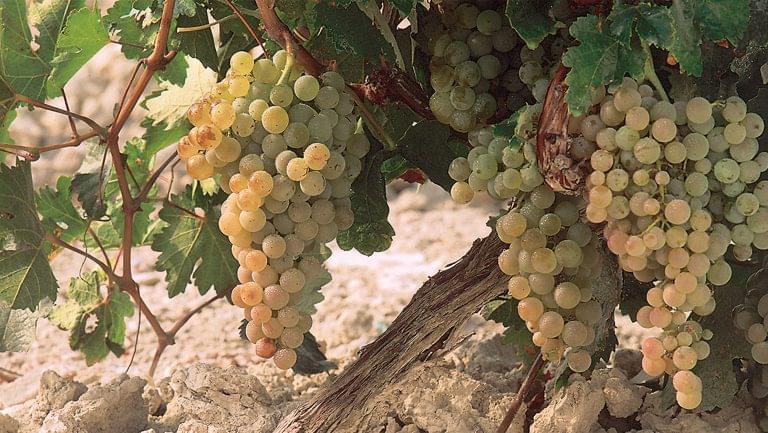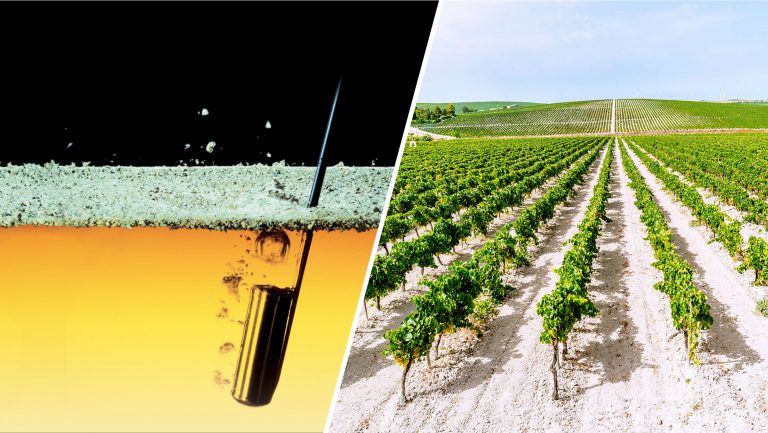“Sherry is one of the most mysterious places in the wine world,” says André Tamers, the founder of North Carolina-based De Maison Selections Wine Imports. “It’s like peeling an onion. The whole time you’re peeling layers. It’s so magical of course, but it makes you cry.”
To substantiate Tamers’ metaphor, a further set of layers were announced in September 2021 for Jerez-Xérès-Sherry DO and Manzanilla de Sanlúcar DO, when the region’s Consejo Regulador approved a major regulatory overhaul to “propel our designations into the future,” as president César Saldaña put it.
Last week, following lengthy delays, the local authority officially greenlit the suite of new regulations. Some of the changes give increased rights to the region’s peripheral areas. Wine maturation will be granted across the entirety of the Sherry DO—rather than the municipalities of Jerez de la Frontera, Sanlúcar de Barrameda, and El Puerto de Santa María—and any vineyard will be allowed to apply for Jerez Superior status.

Don’t miss the latest drinks industry news and insights. Sign up for our award-winning newsletters and get insider intel, resources, and trends delivered to your inbox every week.
Furthermore, producers will be able to better communicate the grapes’ provenance by stating a pago (area) of origin on the label, and the term en rama, which indicates unfiltered and unfined finos, will be more tightly regulated. There will also be impacts on wine style, as the new regulations involve the return of six neglected local varieties, the creation of the new fino viejo category, the modification of minimum sugar content for both dry and sweeter wines, and, crucially, the end of mandatory fortification.
This major regulatory overhaul is designed to address multiple consumer needs. Not only does it provide drinkers with enhanced transparency and a broader range of wine styles, by embracing and promoting the premiumization of the sherry category, the new regulations also hope to increase sherry’s appeal to a younger generation of imbibers.
“In the past, we were very successful in positioning sherry as a drink,” says Saldaña. “One part of the strategy for the future of sherry is for it to become more of a wine. Everything we do has to be with the objective of repositioning [sherry] where it belongs—in the world of wine.”
The Return of Neglected Varieties
As the new regulations come into play, the DO will see the return of six neglected local grape varieties: Beba, Cañocazo, Mantúo Castellano, Mantúo de Pilas, Perruno, and Vigiriega. Producers will be immediately allowed to use the grapes both in blends or to make varietal wines, although Mantúo Castellano and Mantúo de Pilas sherries won’t be released until the grapes are added to Spain’s national register of winegrape varieties, hopefully sometime next year.

According to Saldaña, Vigiriega will be this development’s real protagonist: “We’re still researching these varieties, but most probably Vigiriega will play a major role here as it seems to respond well to prolonged periods of drought and climatic change is increasingly affecting our region,” he says. “For the first time, this year we’ve picked Palomino grapes in July [28th]. The previous record was the 4th of August.”
Alongside an answer to the increasingly drier climate, the wider ampelographic portfolio taps into sommeliers’ and wine professionals’ growing fascination towards indigenous varieties. “I came across vineyards of older grape varieties there and I was really excited,” says Tamers. “Ours is a very geeky market. We are at the top end of the niche, that’s what our customers want.”
Andalusia’s viticultural research center Rancho de la Merced has been experimenting with these varieties, and so are winemakers, including the Manifesto 119 collective of winemakers, an undertaking that originated from the very intent to resurrect the region’s forgotten grape varieties. “It’s something that was needed,” says Jordi Paronella, the wine director of Washington D.C.-based José Andrés Group. “I’m good friends with [winemakers] Willy Pérez and Ramiro Ibáñez [of Manifesto 119]. They are pioneers of going back to the roots and understanding the varieties that are most adapted to the region … Having local grape varieties is a good selling point. It’ll be good to be able to say to a guest that sherry is not just about Palomino Fino.”
A Spirit-less Sherry
The new regulations also end the mandatory fortification of sherry. In 2019, a proposal to allow the production of unfortified sherry was submitted for consideration yet withdrawn shortly after. “At that time, the Spanish ministry recommended waiting until we could submit all our proposals in just one document,” explains Saldaña, “so we withdrew it because we [wanted to] reach a consensus in 2021 on this broader set of modifications.”
Unfortified wines were common across the region before the addition of grape spirit became the norm from around the 18th century onwards. Rather than to revive a historical practice however, Tamers—who already imports some of the region’s unfortified bottlings—believes that these sherries’ appeal lies in their enhanced sense of place: “We really need to start thinking of the terroir,” he says. “Unfortified sherry is an amazing concept. I think it’s a great development. We will definitely bring them in. So far, we’ve considered them as sherry even if they’re not when talking to our customers, but it will be an added bonus if it says sherry on the label.”

Unlike all other regulations, this change needs final EU approval to become law, which is expected to happen between January or February next year: “We’ve already spoken to the relevant EU authorities and they anticipate no problem,” says Saldaña.
A More Premium Offering
Additional proposed modifications—such as the new fino viejo category and the pago labeling—are designed to encourage sherry’s premiumization process.
“All the efforts we are making are towards the younger, more educated, more involved consumers who are interested in [premium] sherry and value the diversity of our offering,” says Saldaña. Indeed, while sherry’s competitive segment has been showing a steady decline across the American and other key markets, the region’s higher-end offering displays promising signs of growth. In 2006, sales of the pale cream, medium, and cream sherry categories—generally associated with the lower end of the sherry market—amounted to nearly 80 percent of all imported DO wine from the region. Last year, the figure had dropped down to 68 percent, to the benefit of Jerez’s more premium offerings.
“Sherry has never been an easy category. But rather than simplify it, houses are doing the opposite,” Saldaña admits, explaining the rationale behind much of the new regulations. “They’re complicating their portfolio because that’s what wine aficionados want. The revival that we are experiencing in some markets is paradoxically due to making sherry even more complicated.”

Dispatch
Sign up for our award-winning newsletter
Don’t miss the latest drinks industry news and insights—delivered to your inbox every week.
Dr. Jacopo Mazzeo is a U.K.-based freelance drinks journalist, consultant, and photographer. He contributes to leading trade and consumer publications including Decanter, Wine Enthusiast, Whisky Magazine, and Good Beer Hunting. Jacopo consults on consumer trends and marketing strategies, is a former sommelier, and judges international wine, beer, and spirits competitions. Before he embraced full-time journalism, he studied musicology at the University of Bologna and took a PhD at the University of Southampton. Follow Jacopo on Instagram @jacopomazzeophoto






